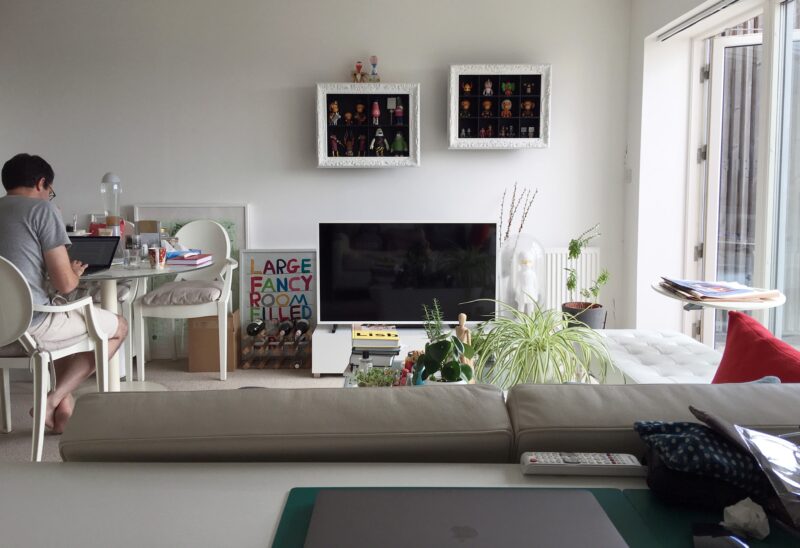
Companies are rethinking the need for city-centre offices. Photo credit: Museum of the Home
Thinking of home differently
Written By
Amanda Baillieu
22.10.2020
Sonia Solicari is the Director of the Museum of the Home and a judge of the 2021 Davidson Prize. The Museum’s Stay Home project has been documenting and sharing personal pictures of people’s lives since the beginning of lockdown. After an extensive refurbishment, the Museum plans to reopen its doors in 2021.
What have you learnt about people’s experiences during lockdown?
What came across in many of the stories is that actually people were really struggling and not feeling particularly resilient. There was a lot of outpouring. The issue of sound came up time and time again. Either the deafening silence or how you negotiate when several of you are working from home in the same space – whose Zoom meeting do you need to be silent for today? And what happens to the quality of your work when you can no longer sing along to the radio?
Lots of people talked about their neighbours. Before lockdown, the working from home experience was a silent, lonely one. Now you can hear people through the walls, so at the same time you become conscious of the noise you're making.
Has the pandemic shifted our view of work?
I think most people are fundamentally re-thinking their lives and, even if they can go back to the office, they are going to negotiate different hours. Flexible working has been happening for years but now that it’s accelerated, people are feeling more empowered to put together a work-life balance that works for them. I think employers are more amenable to it than they've ever been.
What does this blended live-work life mean for the way our homes are designed?
In recent years architects have been focusing on small homes and urban living and we’re living in smaller and smaller spaces. Our living spaces aren't going to get any bigger, certainly in cities, so how do we deal with that? And what’s come out of our Stay Home project – and numerous other projects over the years – is the importance of public green space. We can’t give everyone a garden, so how do you negotiate that inside-outside space in the home instead? How do you bring more light and space for planting into the home? Of all the issues arising from lockdown, this is something people are starting to look at in a more concentrated way.
How will the Stay Home initiative inform the Museum’s future programme?
It’s such rich material and we see it as a launch pad for lots of conversations and perhaps even an element of championing particular causes like changes in legislation that enable people to work from home in an easier way – that’s definitely a possibility.
What are some of the changes that would make working at home easier?
I think there’s something around soundproofing our homes. Many of us live in leaky 19th century building stock where sound just permeates through the whole building. And then there’s bike storage. If there was more bike storage on the street people wouldn’t need to find valuable space in a very small home to store them. Bikes are huge things and we’re being encouraged to get on them more and more. If there’s seven or eight of you, all of whom have bikes, that creates a significant storage issue that hasn’t yet been solved.
As well as work, the home has also taken on new layers of meaning. How will the Museum address this?
We hope that we will have even more relevance to people than we did before. The way we conceive it is that home is universally relevant but deeply personal. Having – or not having – a home defines everybody.
Lockdown has been definitely been a time in which people have been actively critiquing and thinking about their homes, and it’s wonderful that our audiences have engaged with us in that way. For us, it’s about having more of those conversations and I think we definitely have a key role to play. People really want to talk about their home experience and how it’s changing and we’re there for them.
For more on the Museum of the Home's Stay Home project, click here